The 8 Chinese Legendary Heroes are stone sculptures depicting famous heroes from Chinese history. The heroes represent various moral values such as filial piety, loyalty, love, benevolence, courtesy, righteousness, honesty and modesty.
The statues were commissioned and donated by Tee Yih Jia Food Manufacturing Pte Ltd, to the government of Singapore. They were originally installed at the Sculpture Garden at Marina City Park and unveiled by then Prime Minister Goh Chok Tong in 1991.
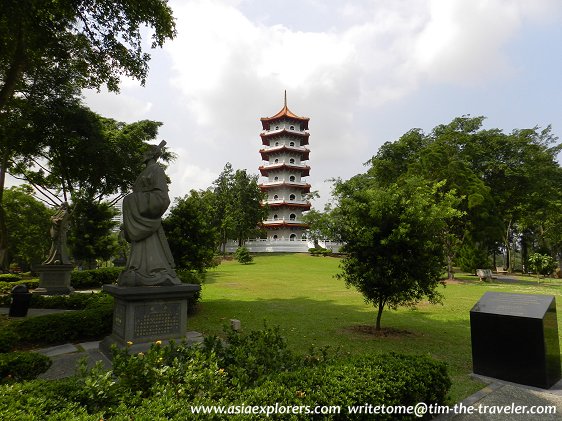 8 Chinese Legendary Heroes, Chinese Garden (11 July 2011)
8 Chinese Legendary Heroes, Chinese Garden (11 July 2011)
The 8 Chinese Legendary Heroes were relocated to the Chinese Garden on 15 January, 2007. They graces a landscaped area near the 7-Storey Pagoda.
The eight sculptures depict the following heroes, arranged in order of their appearance in history:
- Confucius (551 - 479 BC)
This well-known Chinese philosopher already has his own statue within the Chinese garden, so this is the second statue of Confucius in the Chinese Garden. - Qu Yuan (340 - 278 BC)
This is the Chinese hero who committed ritual suicide to protest against the corruption of the era. The tradition of Dragon Boat Festival is traced to the legend that villagers tried to save him by beating drums, to keep fish away from his body. - Guan Yu (160 - 219 AD)
General who served under the warlord Liu Bei during the Eastern Han Dynasty, who was instrumental in the collapse of the Han Dynasty and the establishment of the Shu Han of the Three Kingdoms. - Hua Mulan (386 - 436 AD)
Woman warrior who joined the all-male army in place of her father. She merited 12 ranks of rewards which she refused. - Yue Fei (1103 - 1142 AD)
Chinese hero from the Southern Song Dynasty, a standard model of loyalty in Chinese culture. - Wen Tianxiang (1236 - 1283 AD)
Scholar-general of the Southern Song Dynasty who resisted the invasion of the Mongols and refused to yield despite being captured and tortured, today a symbol of patriotism and righteousness. - Zheng He (1371 - 1435 AD)
Ming Dynasty Admiral who led the Chinese diplomatic fleet through Southeast Asia, South Asia and eastern Africa. - Lin Zexu (1785 - 1850 AD)
Chinese scholar-official of the Qing Dynasty, a symbol of high moral ground, whose forceful opposition of the opium trade led to the First Opium War.
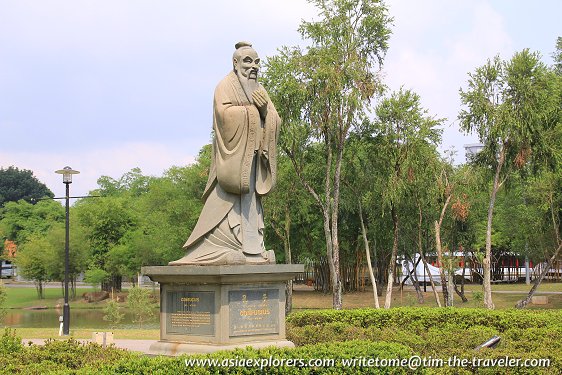 Statue of Confucius, Chinese Garden (11 July 2011)
Statue of Confucius, Chinese Garden (11 July 2011)
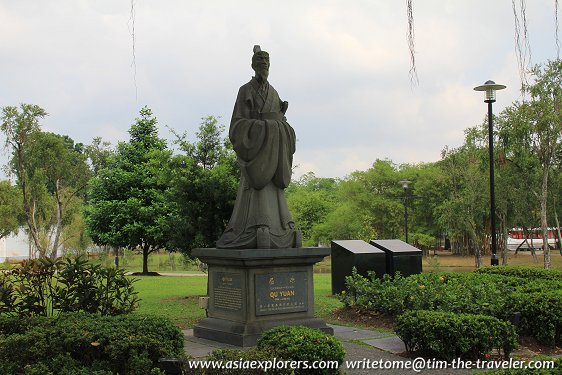 Statue of Qu Yuan, Chinese Garden (11 July 2011)
Statue of Qu Yuan, Chinese Garden (11 July 2011)
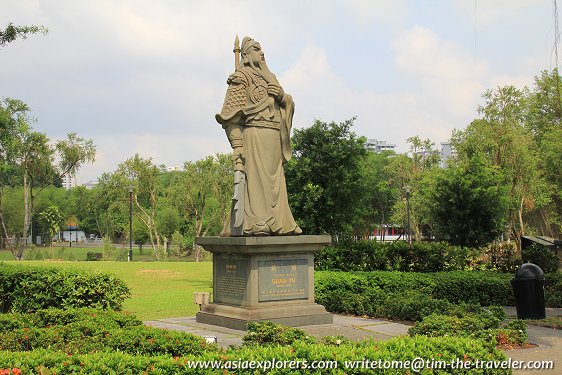 Statue of Guan Yu, Chinese Garden (11 July 2011)
Statue of Guan Yu, Chinese Garden (11 July 2011)
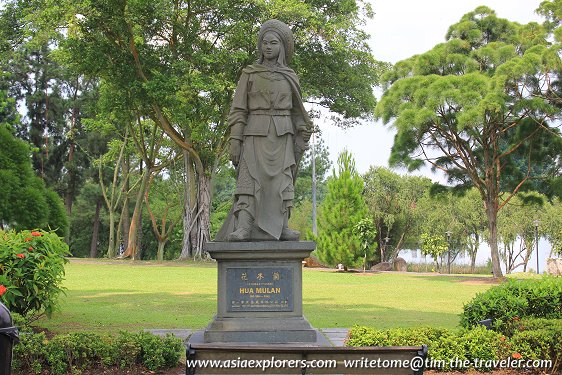 Statue of Hua Mulan, Chinese Garden (11 July 2011)
Statue of Hua Mulan, Chinese Garden (11 July 2011)
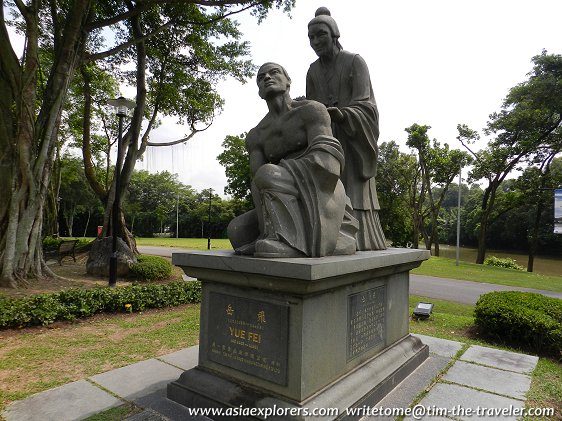 Statue of Yue Fei, Chinese Garden (11 July 2011)
Statue of Yue Fei, Chinese Garden (11 July 2011)
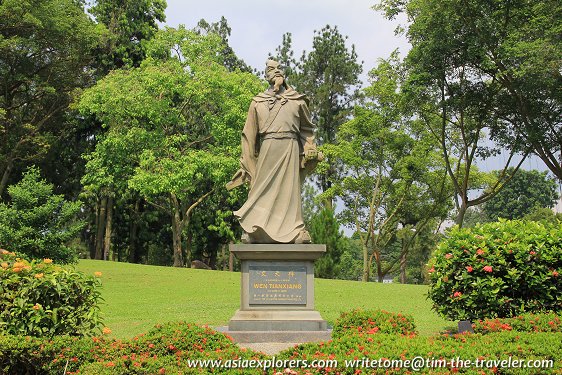 Statue of Wen Tianxiang, Chinese Garden (11 July 2011)
Statue of Wen Tianxiang, Chinese Garden (11 July 2011)
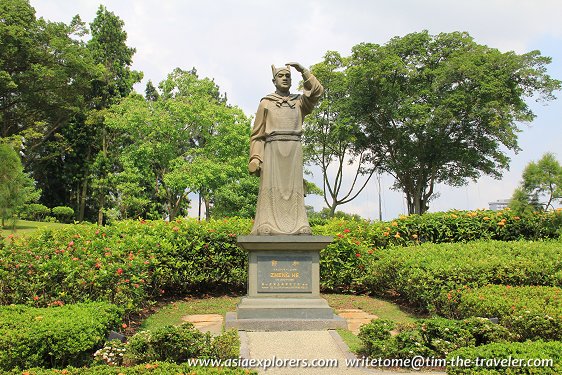 Statue of Zheng He, Chinese Garden (11 July 2011)
Statue of Zheng He, Chinese Garden (11 July 2011)
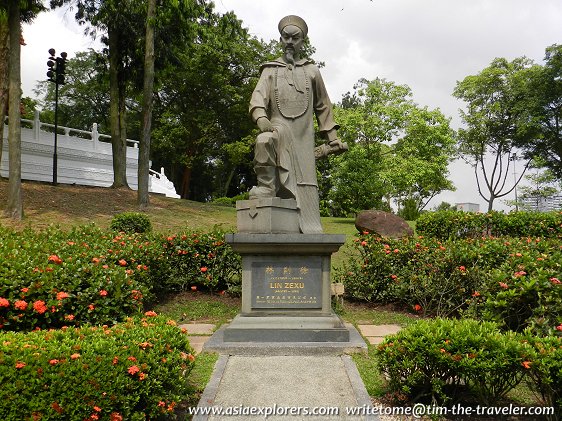 Statue of Lin Zexu, Chinese Garden (11 July 2011)
Statue of Lin Zexu, Chinese Garden (11 July 2011)
List of the Parks in Singapore; Discover Singapore
 Copyright © 2003-2025 Timothy Tye. All Rights Reserved.
Copyright © 2003-2025 Timothy Tye. All Rights Reserved.
Copyright © 2003-2025 Timothy Tye. All Rights Reserved.

 Go Back
Go Back